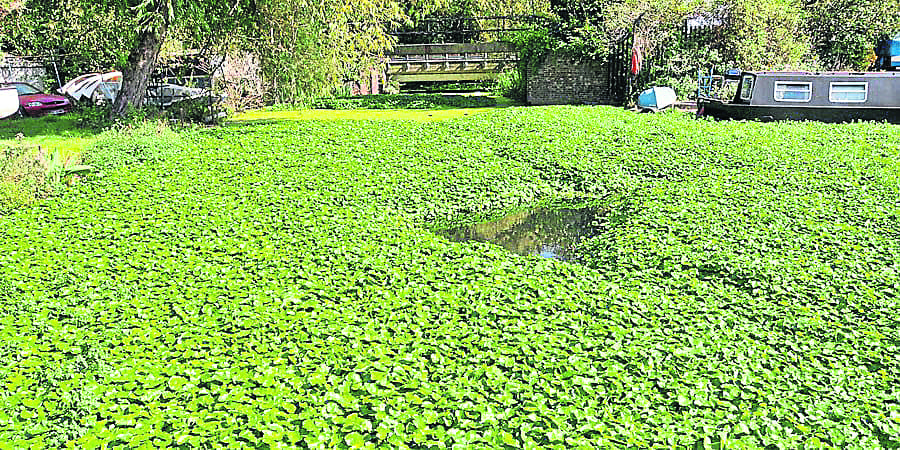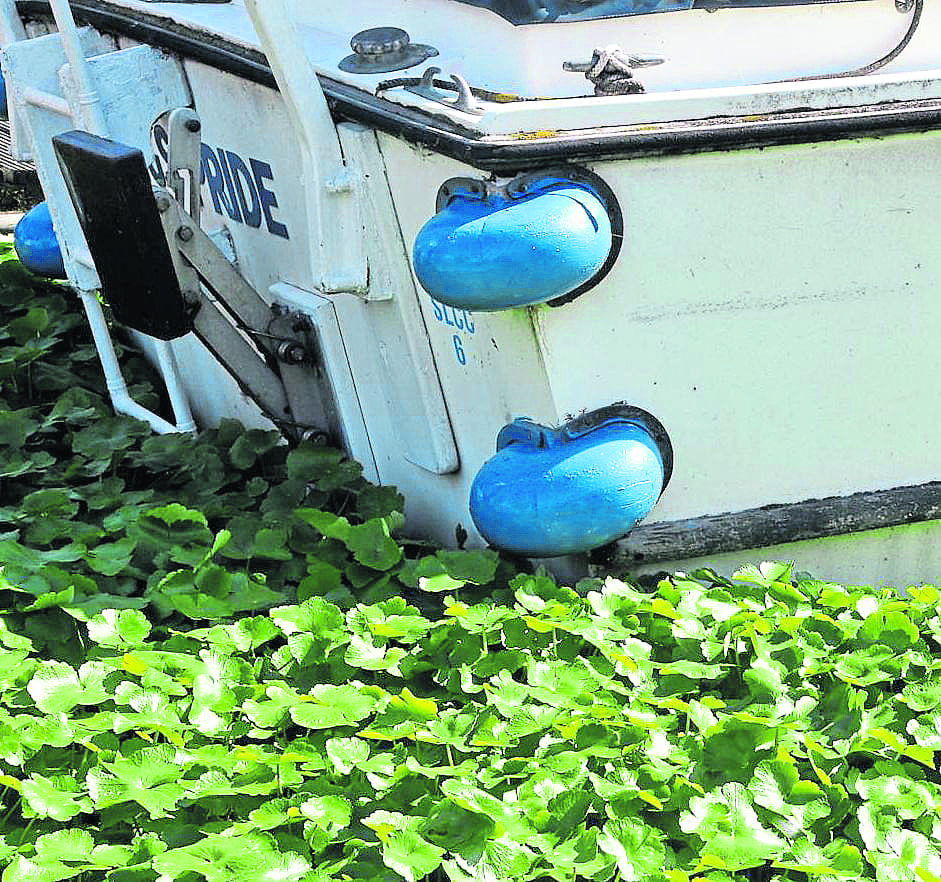By working towards an environmentally sustainable boating community, we can save money, avoid red tape and safeguard the waterways and habitats we enjoy for the future. Here are some tips to make caring for the environment second nature this cruising season.
Kate Fortnum is campaign manager for The Green Blue, which is for everyone who enjoys getting out on the water, or whose livelihood depends on boats
and watersports.
Kate explains: “As boaters we all have a vested interest in protecting the environment where we spend our leisure time. But as more and more of us take to the water, we risk damaging the natural environment.
“Nobody wants red tape and regulations and our aim is to avoid this by encouraging people to voluntarily change their habits and become more environmentally friendly every time they go boating.”

A carpet of floating pennywort. PHOTO: GBNNS
How to… reduce your wash
Shoreline and bankside habitats support a rich variety of wildlife. Even minor damage can be a problem in sensitive habitats such as mudflats, salt marshes and reed beds. Your wash can erode banks, (a major cause of habitat loss), disturb moored boats and even loosen their moorings.
What can we do?
• Slow down if there are waves at the bow or stern of your boat. You are probably using unnecessary fuel with no increase in actual speed
• Keep to designated speed limits. If in doubt, don’t exceed 4 knots
• To minimise the impact of your wake keep a safe and reasonable distance between your boat and the bank
• Hull design can have a major influence on wash. Short full bows give higher waves, while longer and finer bows can reduce wash
• A well balanced and clean propeller will disturb less sediment and reduce your impact on the underwater environment
• Sensible use of throttle and good boat handling skills can significantly reduce wash as well as improve fuel efficiency
• When you go ashore, always use recognised landing places
How to… avoid spreading non-native invasive species
Invasive (alien) species are introduced non-native species that have become established outside their normal habitat or native country. It is estimated that the threat to biodiversity from these invaders is second only to that of habitat loss. Many species thrive in both salt and fresh water. Their main means of spreading is via boat hulls or propellers, or within bilge or engine cooling
water systems.
Weed around the rudder of a boat. PHOTO: Non Native Species Secretariat
What can we do?
• Avoid running through water plants and weed as they will break up, get caught round the rudder and hull and increase the risks of spreading
• Avoid ropes, fenders, and gang planks touching water and other equipment where possible to avoid picking up invasive species
• Remove any visible animal and plant matter from the pole, anchor, rudder or any other equipment that has touched the water before leaving a berth or anchorage
A weedcutter in action.
Kate explains: “From interfering with navigation and water control to reducing water quality and habitat availability, invasive species can have a huge impact on our canals and rivers.
“It’s important that boaters demonstrate that they’re doing all they can to reduce the spread of invasive non-native species in order to help protect the environment and reduce potential damage to boat engines
and props.”
During the spring and summer invasive aquatic species such as duckweed (Lemnoideae family), blanket weed (pond algae), floating pennywort (Hydrocotyle ranunculoides) and water fern (Azolla filculoides) can multiply and cover the surface of the water, negatively impacting native species by restricting sunlight and reducing oxygen levels. So if you see it, report it!
● For more top tips on safeguarding our inland waters, or to download your free copy of The Green Guide to Inland Boating, visit
www.thegreenblue.org.uk. The site is packed with practical advice, case studies and information on green products to help you save money, protect water quality and habitats and ultimately, safeguard the future of our coastal and inland waterways.






